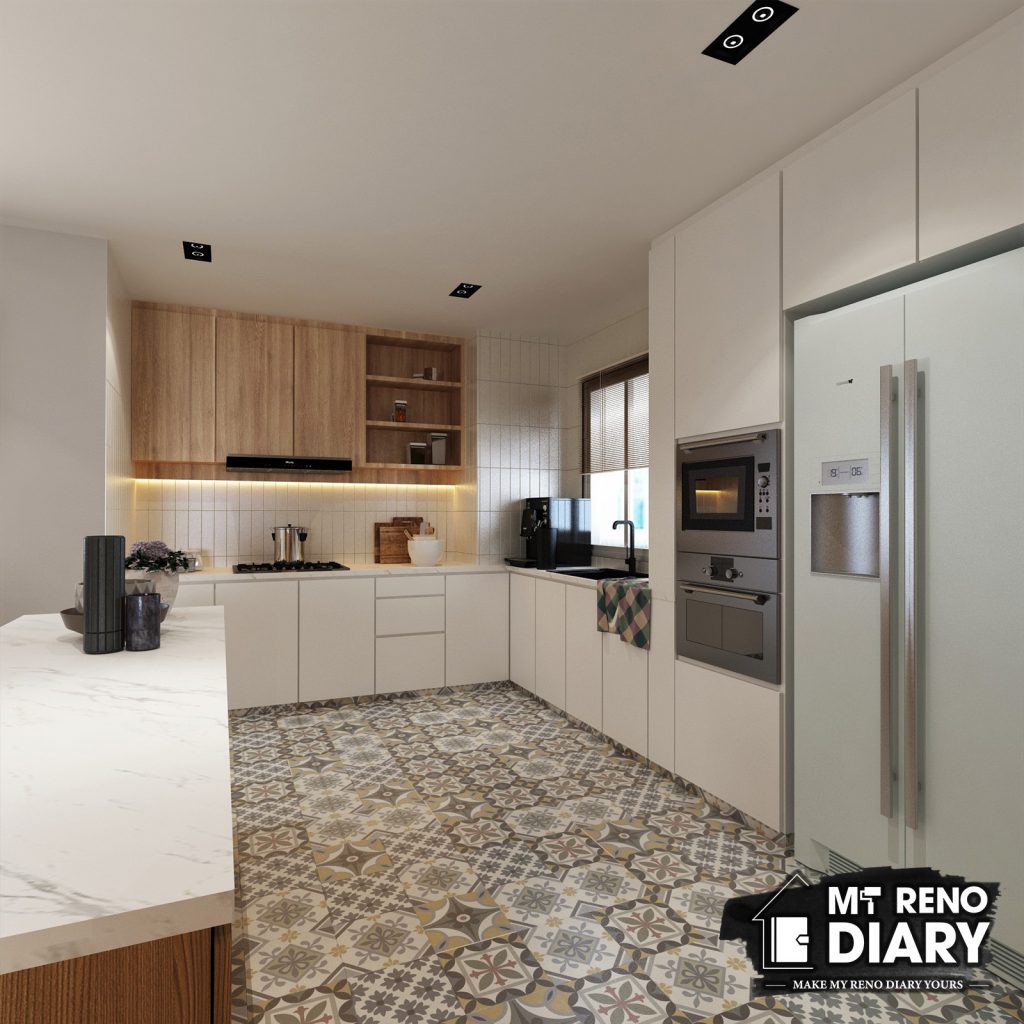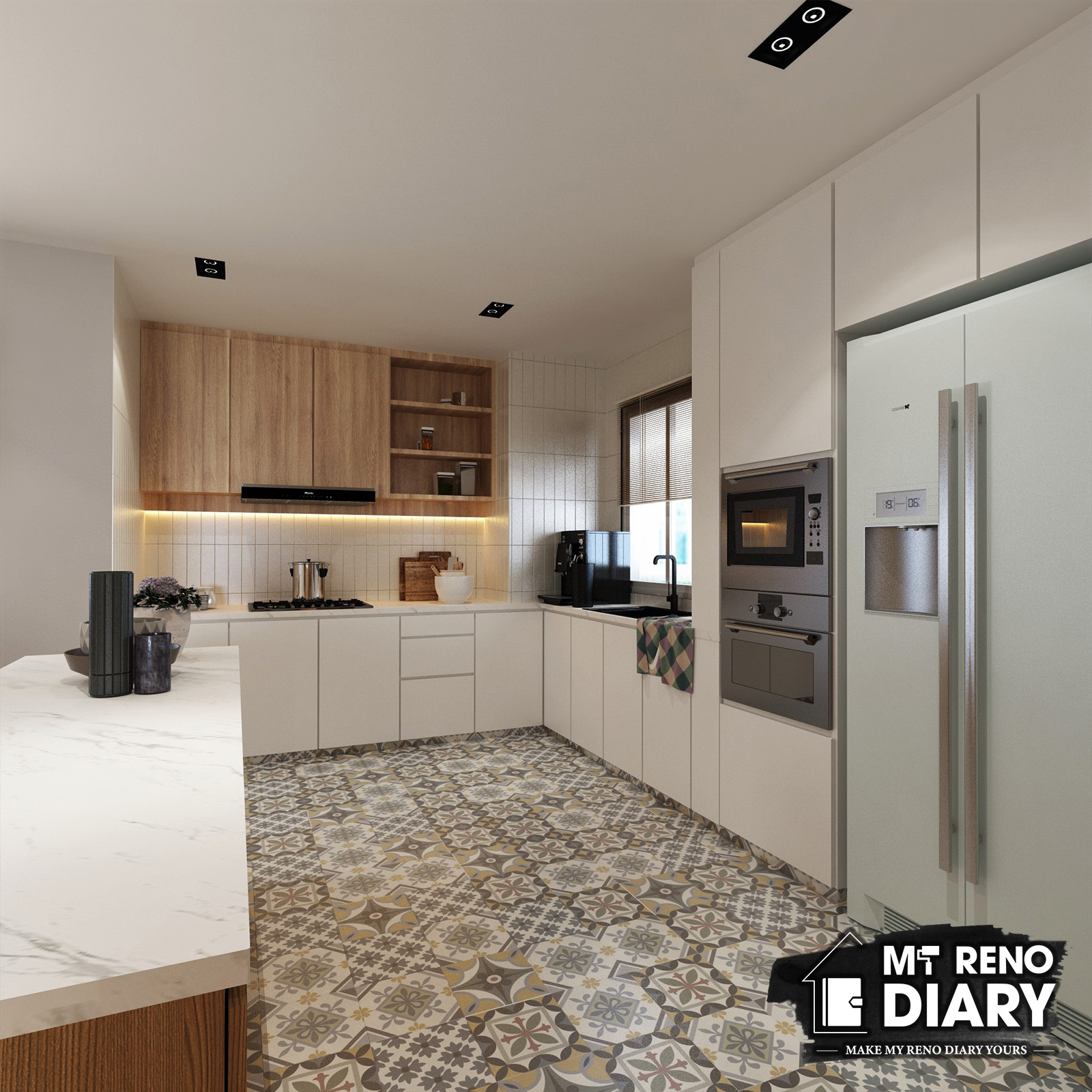The kitchen sink can be a beautiful space when done correctly. In some instances, a kitchen sink could be too much. If you decide to go this route, keep in mind that a beautiful kitchen sink will not necessarily turn heads. It is important to understand what kind of design you are looking for in your kitchen design Singapore. A simple kitchen sink is an excellent choice for a small space. The kitchen sink design has become increasingly popular. But there is a wide variety of designs that are available. In this article, we will go over the pros and cons of each type of kitchen sink design.

Integrated Sink
Manufacturers of solid surface countertops, such as DuPont for its Corian brand and Samsung for its Staron line, produce integrated (or integral) sinks. Integrated sinks are fused in place at the fabricator’s shop using the same material as the counter.
Pros
- The intrusive rim is removed with integrated sinks. The counter and sink are one continuous surface.
- Undermount sinks have an under-counter seam that can gather trash and mold; integrated sinks do not have this seam.
- Integral sinks have a very popular aesthetic among homeowners.
Cons
- Integrated sinks, which are popular in bathrooms, are more uncommon in kitchens.
- Because they are made to order, these things are quite pricey.
- If the sink is damaged, it must be fixed rather than being simply removed and replaced.

Corner Sink
Double basins that are positioned at right angles to one another make up a kitchen corner sink.
Pros
- Some corner sinks have enough space between them to provide an integrated drying area in the middle.
- Counter corners, a notorious space-waster, are smartly utilized by corner sinks.
Cons
- Corner sinks are uncommon and therefore difficult to find.
- Corner sinks are pricey when you can find them.
- Additionally, these sinks require certain counter cuts. These sinks are forced to span the corner seam that most kitchen countertops have, which weakens the countertop’s structural integrity there.
Bowl Sink-Double Basin
Dual basin kitchen sink configurations, which are the most common, allow for washing on one side and rinsing or drying on the other. Double basin sinks are incredibly versatile and cover all sink functions, including washing, rinsing, and draining. With a good double basin sink, it is difficult to go wrong.
Pros
- versatile and multifunctional.
- advantageous in homes without dishwashers.
Cons
- It’s possible for either side to be too tiny to fit large pots, baking dishes, or casseroles.
- A double sink’s utilitarian aspect irks some house owners.
- Single-basin sinks are popular in today’s design trends.
Undermount Sink
In contrast to top-mount sinks, undermount sinks use specialized clips to secure the sink to the underside of the counter.
Pros
- With an undermount sink, you may use a sponge to sweep crumbs and water from the countertop right into the sink. These sinks make cleanup a breeze because there is no rim to get in the way.
- A smoother appearance appeals to many homeowners.
- Compared to overmount sinks, undermount sinks are frequently of greater quality.
Cons
- Although dirt doesn’t accumulate on top, it does at the point where the counter and sink meet.
- Overmount sinks are typically cheaper to install and purchase than undermount sinks.
- Your sink’s size can be restricted by undermounting.

Drainboard Sink
Sinks with drainboards combine a small basin with a counter-level drainboard on opposite sides.
Pros
- These more compact sinks are ideal for galley kitchens or any place that is constrained.
- The drainboard component of the drain catches water and swiftly drains it back to the sink because of the lip that surrounds it.
Cons
- Sinks with drainboards typically have small basins. Therefore, if you enjoy cooking and hosting large gatherings, this sink might not be for you.
- The drainboard won’t be much use if you don’t frequently wash dishes by hand.
Integrated Sink
Manufacturers of solid surface countertops, such as DuPont for its Corian brand and Samsung for its Staron line, produce integrated (or integral) sinks. Integrated sinks are fused in place at the fabricator’s shop using the same material as the counter.
Pros
- The intrusive rim is removed with integrated sinks. The counter and sink are one continuous surface.
- Undermount sinks have an under-counter seam that can gather trash and mold; integrated sinks do not have this seam.
- Integral sinks have a very popular aesthetic among homeowners.
Cons
- Integrated sinks, which are popular in bathrooms, are more uncommon in kitchens.
- Because they are made to order, these things are quite pricey.
- If the sink is damaged, it must be fixed rather than being simply removed and replaced.
Corner Sink
Double basins that are positioned at right angles to one another make up a kitchen corner sink.
Pros
- Some corner sinks have enough space between them to provide an integrated drying area in the middle.
- Counter corners, a notorious space-waster, are smartly utilized by corner sinks.
Cons
- Corner sinks are uncommon and therefore difficult to find.
- Corner sinks are pricey when you can find them.
- Additionally, these sinks require certain counter cuts. These sinks are forced to span the corner seam that most kitchen countertops have, which weakens the countertop’s structural integrity there.
Top-Mount Sink
The top-mount or drop-in kitchen sink, which is the most popular kind, is installed from above. A hole is cut into the counter material, and the sink is fitted from above using a template provided by the sink manufacturer. The rim supports the entire weight of the sink. The silicone is then used to seal the sink’s rim to the counter. These sinks are sometimes referred to as rimmed or self-rimming sinks because the edge of the sink forms a rim.
Pros
- Installation does not require any unique abilities.
- However, the majority of DIYers are capable of creating sink cutouts in solid surface and even laminate.
- The overall cost is not that high.
Cons
- You can’t just sweep water and trash from the counter into the sink because of the rim.
- The rim is an additional component of the sink that requires cleaning.
- Some house owners object about how the sink and rim appear to be separated.

MRD
Thematic and reflect your personality
MRD Singapore is the perfect formula for you to make your interior dream come true. One of the main keys to great interior design is that it should thematic and reflect your personality and taste as well as be cost-effective.
With so many styles, trends and designs to choose from, it’s hard to decide which one to go for. With MRD in 7 Gambas Cres, #01-01 ARK@Gambas, Singapore 757087, you can definitely prevent this situation and get the best dream design you ever wanted but better. No more stress, contact us here to solve your interior problems.



